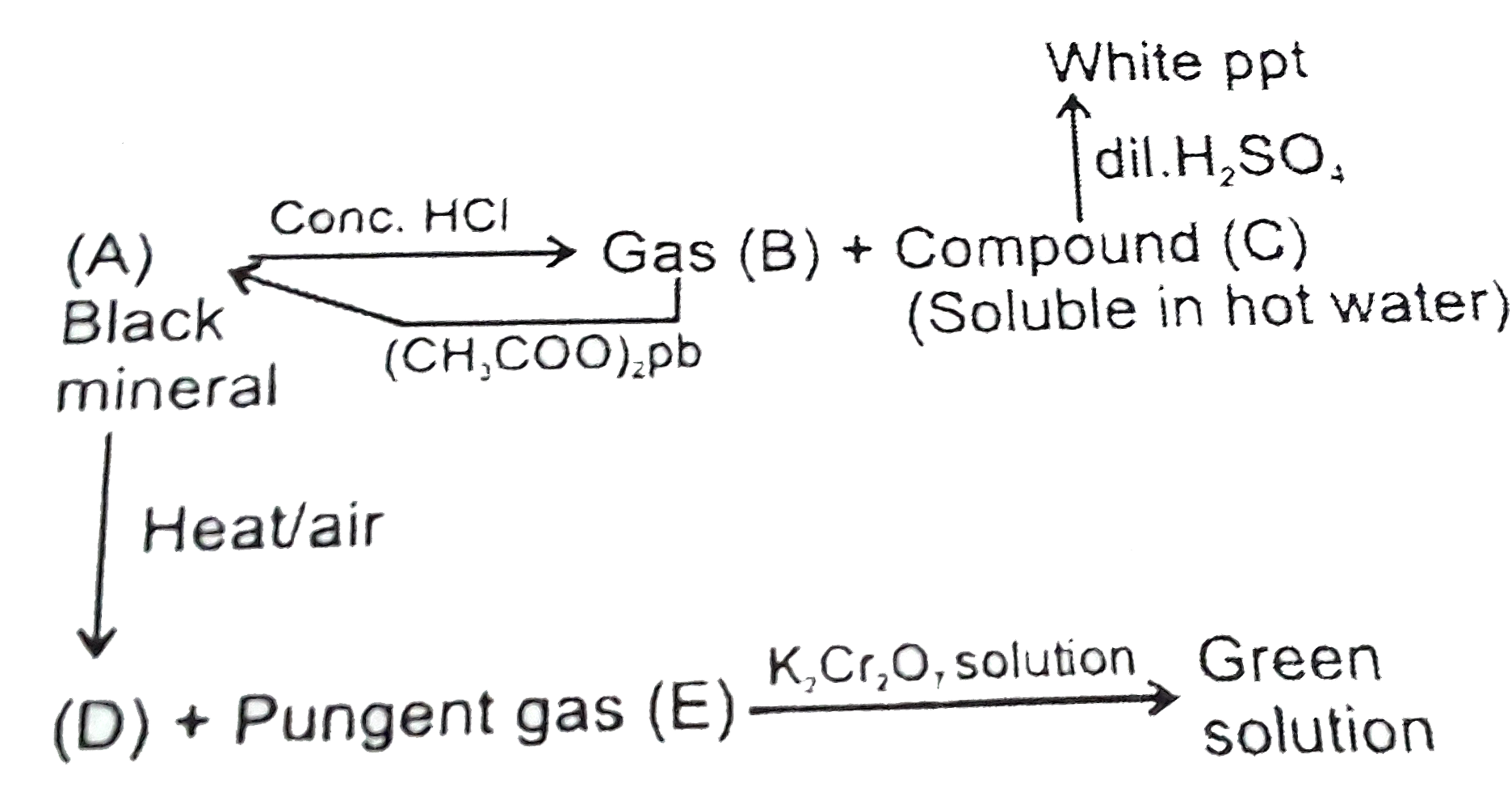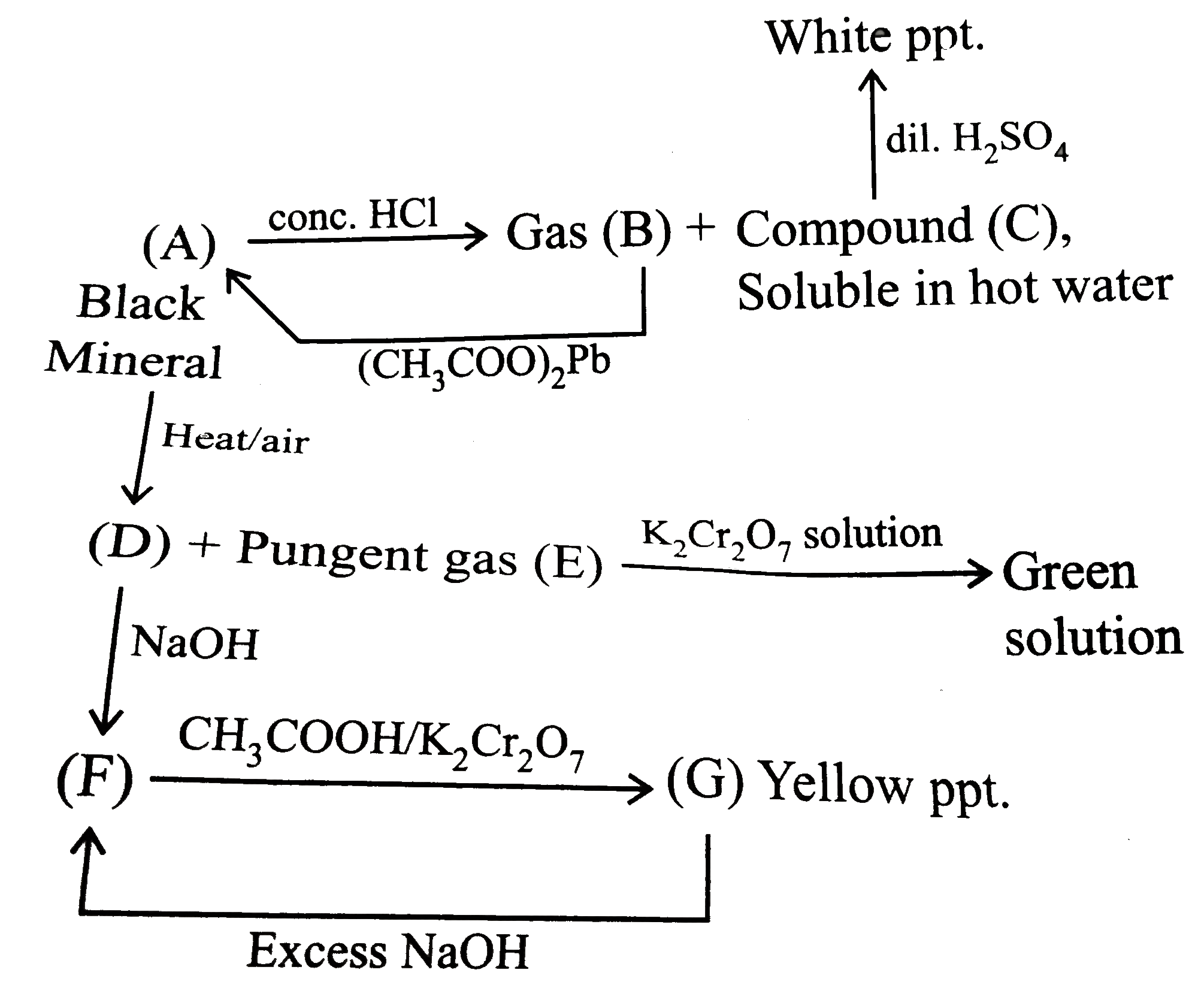ACalcination−−−−−−→CaO+MgO+(B)Colourless gas
When the colourless gas (B) is passed through lime water, initially a milky solution is obtained and on excess passage of gas (B) through the lime water, milkiness disappears.
(A) is :
CaCO3
MgCO3
CaCO3.MgCO3
CaSO4.MgCO3
The correct Answer is:C
To solve the question, we need to identify the substance (A) that undergoes calcination to produce CaO, MgO, and a colorless gas (B). We also need to analyze the behavior of gas (B) when passed through lime water.
1. Understanding Calcination:
- Calcination is a thermal treatment process where a substance is heated to high temperatures in the absence of air or limited air. This process is commonly used to convert ores into oxides.
2. Identifying the Products:
- The products of calcination given in the question are CaO (calcium oxide) and MgO (magnesium oxide).
3. Determining the Source of CaO and MgO:
- Calcium oxide (CaO) is typically produced from the calcination of limestone (CaCO3), and magnesium oxide (MgO) can be produced from the calcination of magnesium carbonate (MgCO3).
- Therefore, the starting material (A) could be a mixture of calcium carbonate and magnesium carbonate.
4. Identifying the Colorless Gas (B):
- When calcium carbonate (CaCO3) is heated, it decomposes to produce CaO and carbon dioxide (CO2) gas.
- Similarly, magnesium carbonate (MgCO3) also decomposes to produce MgO and carbon dioxide (CO2).
- Thus, the colorless gas (B) produced in this reaction is carbon dioxide (CO2).
5. Analyzing the Reaction with Lime Water:
- Lime water is a dilute solution of calcium hydroxide (Ca(OH)2). When carbon dioxide (CO2) is passed through lime water, it reacts to form calcium carbonate (CaCO3), which is insoluble and causes the solution to turn milky.
- The reaction is:
Ca(OH)2+CO2→CaCO3(s)+H2O
- When excess CO2 is passed through the lime water, the milkiness disappears because the calcium carbonate formed reacts with more carbon dioxide to form soluble calcium bicarbonate:
CaCO3+CO2+H2O→Ca(HCO3)2
6. Conclusion:
- Based on the above analysis, the substance (A) that undergoes calcination to produce CaO, MgO, and the colorless gas (B) is a mixture of calcium carbonate and magnesium carbonate.
Final Answer:
(A) is a mixture of calcium carbonate (CaCO3) and magnesium carbonate (MgCO3).
---
- Calcination is a thermal treatment process where a substance is heated to high temperatures in the absence of air or limited air. This process is commonly used to convert ores into oxides.
- The products of calcination given in the question are CaO (calcium oxide) and MgO (magnesium oxide).
- Calcium oxide (CaO) is typically produced from the calcination of limestone (CaCO3), and magnesium oxide (MgO) can be produced from the calcination of magnesium carbonate (MgCO3).
- Therefore, the starting material (A) could be a mixture of calcium carbonate and magnesium carbonate.
- When calcium carbonate (CaCO3) is heated, it decomposes to produce CaO and carbon dioxide (CO2) gas.
- Similarly, magnesium carbonate (MgCO3) also decomposes to produce MgO and carbon dioxide (CO2).
- Thus, the colorless gas (B) produced in this reaction is carbon dioxide (CO2).
- Lime water is a dilute solution of calcium hydroxide (Ca(OH)2). When carbon dioxide (CO2) is passed through lime water, it reacts to form calcium carbonate (CaCO3), which is insoluble and causes the solution to turn milky.
- The reaction is:
Ca(OH)2+CO2→CaCO3(s)+H2O
- When excess CO2 is passed through the lime water, the milkiness disappears because the calcium carbonate formed reacts with more carbon dioxide to form soluble calcium bicarbonate:
CaCO3+CO2+H2O→Ca(HCO3)2
- Based on the above analysis, the substance (A) that undergoes calcination to produce CaO, MgO, and the colorless gas (B) is a mixture of calcium carbonate and magnesium carbonate.
(A) is a mixture of calcium carbonate (CaCO3) and magnesium carbonate (MgCO3).
Topper's Solved these Questions
- GENERAL PRINCIPLES AND PROCESS OF ISOLATION OF ELEMENTSBOOK - CENGAGE CHEMISTRY ENGLISHCHAPTER - GENERAL PRINCIPLES AND PROCESS OF ISOLATION OF ELEMENTSEXERCISE - Exs 1.1 (Subjective)
25 Videos
- GENERAL PRINCIPLES AND PROCESS OF ISOLATION OF ELEMENTSBOOK - CENGAGE CHEMISTRY ENGLISHCHAPTER - GENERAL PRINCIPLES AND PROCESS OF ISOLATION OF ELEMENTSEXERCISE - Exs 1.1 (Objective)
14 Videos
- GENERAL PRINCIPLES AND PROCESS OF ISOLATION OF ELEMENTSBOOK - CENGAGE CHEMISTRY ENGLISHCHAPTER - GENERAL PRINCIPLES AND PROCESS OF ISOLATION OF ELEMENTSEXERCISE - Archives (Subjective)
14 Videos
- ELECTROCHEMISTRYBOOK - CENGAGE CHEMISTRY ENGLISHCHAPTER - ELECTROCHEMISTRYEXERCISE - Archieves Subjective
35 Videos
- GRIGNARD REAGENTS AND ORGANOMETALLIC REAGENTSBOOK - CENGAGE CHEMISTRY ENGLISHCHAPTER - GRIGNARD REAGENTS AND ORGANOMETALLIC REAGENTSEXERCISE - Exercises Archives (Linked Comprehension)
1 Videos
Similar Questions
ACalcination−−−−−−→CaO+MgO+(B)Colourless gas
When the colourless gas (B) is passed through lime water, initially a milky solution is obtained and on excess passage of gas (B) through the lime water, milkiness disappears.
Lime water is.
View SolutionACalcination−−−−−−→CaO+MgO+(B)Colourless gas
When the colourless gas (B) is passed through lime water, initially a milky solution is obtained and on excess passage of gas (B) through the lime water, milkiness disappears.
Milkiness of lime water solution disappears due to the formation of :
View Solution
Knowledge Check
When CO2 is passed through lime water , the milkiness first formed is due to the formation of ………………….
Athe reversible reaction taking placeBformation of water soluble calcium bicarbonateChuge amount of heat evolved during the reactionDformation of water soluble complex of calcium
ACalcination−−−−−−→CaO+MgO+(B)Colourless gas
When the colourless gas (B) is passed through lime water, initially a milky solution is obtained and on excess passage of gas (B) through the lime water, milkiness disappears.
Name of the product (A) is :
View SolutionWhat happens when fluorine gas is passed through water?
View SolutionThis gas turns lime water milky.
View SolutionWhat do you observe when
CO2 is passed through lime water first a little and then in excess.
View Solution
Gas (B) on passing through cadmium acetate solution will give :
View Solution
Gas (B) on passing through CaSO4 solution will give
View SolutionOn passing excess of CO2 in lime water, its milky appearance disappears because-
View Solution
